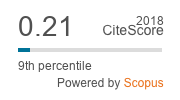Quantidade de Treino e Reorganização de Classes de Equivalência com Crianças
DOI:
https://doi.org/10.1590/0102.3772e3528Palabras clave:
Equivalência, Reorganização de classes, Revisão de linha de base, Reversão das relações de linha de base, CriançasResumen
Investigou-se o efeito da revisão da linha de base na formação, reorganização e restabelecimento de classes de equivalência. Quatro crianças (5-6 anos) realizaram duas condições (Com e Sem Revisão das relações treinadas antes dos testes), com variação da ordem de exposição. Na Fase 1, foram treinadas as relações de linha de base (AC, BC e AD) e testadas as que evidenciam classes de equivalência. Na Fase 2, apenas a relação AD foi revertida e realizados os testes de reorganização. Na Fase 3, os treinos e testes da Fase 1 foram repetidos. Verificou-se que para três participantes, apenas da Condição Com Revisão, que as classes foram reorganizadas, conforme o treino de reversão, se restabeleceram com o retorno à linha de base.
Descargas
Citas
Albuquerque, A. R., & Melo, R. M. (2005). Equivalência de estímulos: Conceito, implicações e possibilidade de aplicação. Em J. Abreu-Rodrigues, M. R. Ribeiro (Eds.), Análise do comportamento: Pesquisa, teoria e aplicação (pp. 245-264). Porto Alegre: ARTMED.
Almeida, J. H., & Haydu, V. B. (2009). Reorganização de classes de estímulos equivalentes: Análise do número de estímulos de comparação. Revista Brasileira de Análise do Comportamento, 5(2), 37-50.
Barnes, D., Lawlor, H., Smeets, P. M., & Roche, B. (1996). Stimulus equivalence and academic self-concept among mildly mentally handicapped and nonhandicapped children. The Psychological Record, 46, 87-107.
Carvalho, M. P., & de Rose, J. C. (2014). Understanding racial attitudes through the stimulus equivalence paradigm. The Psychological Record, 64, 527-536.
de Rose, J. C., de Souza, D. G., & Hanna, E. S. (1996). Teaching reading and spelling: Exclusion and stimulus equivalence. Journal of Applied Behavior Analysis, 29, 451-469.
Dube, W. V. (1991). Computer software for stimulus control research with Macintosh computers. Experimental Analysis of Human Behavior Bulletin, 9, 28-30.
Dube, W. V., Mcllvane, W. J., Mackay, H. A., & Stoddard, L. T. (1987). Stimulus class membership established via stimulus-reinforcer relations. Journal of the Experimental Analysis of Behavior, 47, 159-175
Dymond, S., & Barnes, D. (1994). A transfer of self-discrimination response functions through equivalence relations. Journal of the Experimental Analysis of Behavior , 62, 251-267.
Folsta, A. G., & de Rose, J. C. (2007). Rearrangement of equivalence classes after reversal of a single baseline relation: Influence of class size. Experimental Analysis of Human Behavior Bulletin , 25, 1-5.
Garotti, M., & de Rose, J. C. (2007). Reorganization of equivalence classes: Evidence of contextual control by baseline reviews before probes. The Psychological Record , 57, 87-102.
Garotti, M., de Souza, D. G., de Rose, J. C., Molina, R. C., & Gil, M. S. A. (2000). Reorganization of equivalence classes after reversal of baseline relations. The Psychological Record , 40, 30-48.
Goyos, C. (2000). Equivalence class formation via common reinforcers among prescholl children.The Psychological Record , 50, 629-654.
Hanna, E. S., Kohlsdorf, M., Quinteiro, R. S., Fava, V. M. D., de Souza, D. G., & de Rose, J. C. (2008). Diferenças individuais na aquisição de leitura com um sistema lingüístico em miniatura. Psicologia: Teoria e Pesquisa, 24, 45-58.
Harlow, H. F. (1949). The formation of learning sets. Psychological Review, 56, 51-65.
Lynch, D. C., & Cuvo, A. J. (1995). Stimulus equivalence instruction of fraction-decimal relations. Journal of Applied Behavior Analysis , 28, 115-126.
Pilgrim, C., Chambers, L., & Galizio, M. (1995). Reversal of baseline relations and stimulus equivalence: II Children. Journal of the Experimental Analysis of Behavior , 63, 239-254.
Pilgrim, C., & Galizio, M. (1990). Relations between baseline contingencies and equivalence probe performances. Journal of the Experimental Analysis of Behavior , 54, 213-224.
Pilgrim, C., & Galizio, M. (1995). Reversal of baseline relations and stimulus equivalence: I. Adults.Journal of the Experimental Analysis of Behavior , 63, 225-238.
Prado, P. S. T., & de Rose, J. C. (1999). Conceito de número: Uma contribuição da análise comportamental da cognição. Psicologia: Teoria e Pesquisa , 15, 227-235.
Saunders, R. R., Drake, K. M., & Spradlin, J. E. (1999). Equivalence class establishment, expansion and modification in preschool children. Journal of the Experimental Analysis of Behavior , 71, 195-214.
Saunders, R. R., Saunders, K. J., Kirby, K. C., & Spradlin, J. E. (1988). The merger and development of equivalence classes by unreinforced conditional selection of comparison stimuli. Journal of the Experimental Analysis of Behavior , 50, 145-162.
Sidman, M. (1994). Equivalence relations and behavior: A research story. Boston: Authors Cooperative.
Sidman, M., & Tailby, W. (1982). Conditional discrimination vs. matching-to-sample: An expansion of the testing paradigm. Journal of the Experimental Analysis of Behavior , 8, 91-112.
Tena, R. O., & Velázquez, H. A. (1997). Estudio exploratorio de la enseñaza de la lectura de notas musicales a través del modelo de discriminación condicional. Revista Mexicana de Psicología, 14(1), 13-29.
Watt, A., Keenan, M., Barnes, D., & Cairns, E. (1991). Social categorization and stimulus equivalence. The Psychological Record , 41, 33-50



